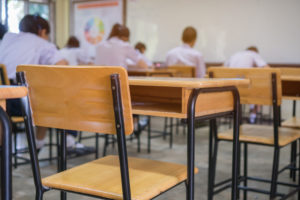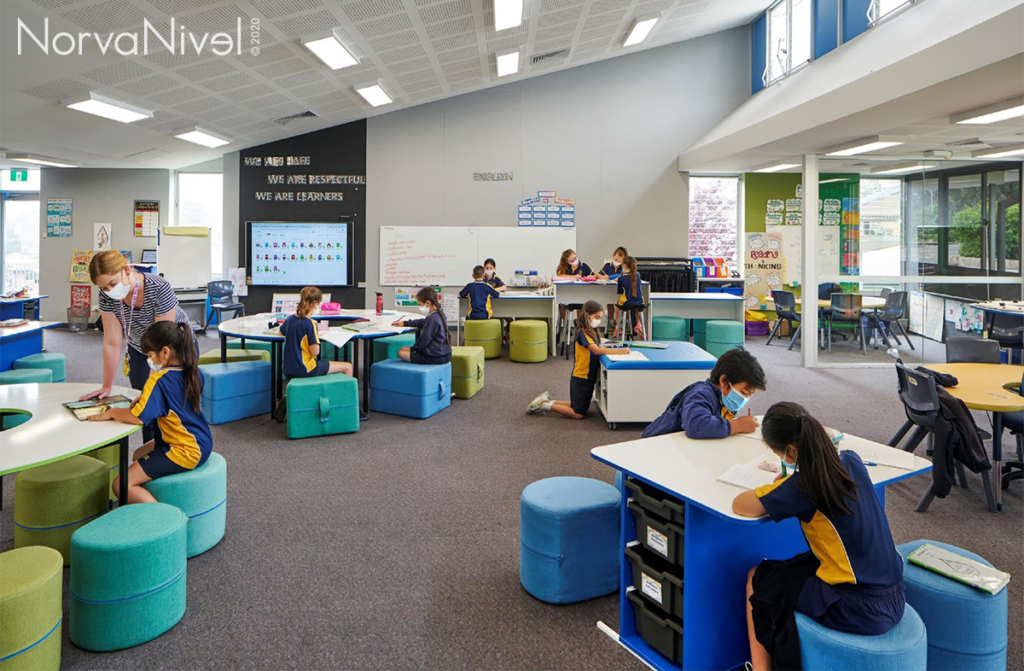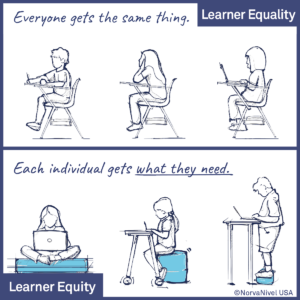An opportunity to move forward, not backward.
As we continue to define the educational goals of the innovation age, we have been delivered another challenge. A pandemic. Will it temporarily change our course? Or simply inspire us to do even better.
Now, the burning question is: How do we sustain distance (albeit temporarily) in learning environments while ensuring it doesn’t become the overriding principle in space design?
COVID-19 has definitely impacted global education. Not only has it raised valid questions and concerns, but it’s also provided us a unique opportunity to witness first hand the connection learners have to a school. Not just the physical building, but the “space” where millions of invaluable connections foster personal growth, emotional development, and social interactions occur that determine our life-long relationships. It’s a space ZOOM could never replace.
How we collectively choose to navigate this new realm of safety and its social and spatial considerations will undoubtedly impact how we educate today’s learners for tomorrow’s future.
These are unprecedented times.
Scary? Yes. Exciting? Absolutely.
To so many, this challenge may seem insurmountable and a temptation to revert back to educational classrooms and concepts of the past. Others may see it as a challenge that has a temporary solution with a broader long-term vision.
Personally, I believe COVID 19 has given us the opportunity to create something even better.
Why? Though we never counted on a pandemic, the uncertain future we’ve been preparing our learners for is upon us. And, as product and space designers in future learning spaces, we’ve never been more poised for the challenge. By design, agile learning spaces are already ready for this.
“We concern ourselves with the agility all day.
Agility of product.
Agility of space.
True agility knows no boundaries (not even COVID)!”
– Avron Levin, Executive Creative Director, NorvaNivel
In fact, the very foundation of our flexible and agile learning spaces is the ability to move, morph and adapt to the needs of both learners and educator pedagogy – whatever a space requires. Right now, learners and their educators require physical distance without sacrificing the social and emotional connection they so desperately need, especially now. That’s exactly what NorvaNivel spaces provide.
Regress? Or progress.
After decades of decoding the value of space, we now know how a well-designed environment actually can ignite the senses and support learners’ emotional, social, and academic acuity to achieve their best.
- We know that modular, adaptive, active learning spaces work to encourage exploration and support collaborative learning.
- We know that spaces, not just educators, can encourage learners to self-evaluate, self-regulate and ultimately self-select, intuitively choosing a space to suit their own needs.
- We know that children who have the ability to manipulate their own space have a greater opportunity to discover their unique power and purpose – their own path to agency.
- We know that space design affects how educators teach (Vasse Study, 2019).
- Most importantly, we now know that EQUALITY DOES NOT PROVIDE EQUITY.
We have finally and firmly moved from equality to equity in education.
The acknowledgment of “classrooms designed for the average learner serves no one” has thankfully cleared the path for agile and adaptable human-centered spaces to serve the needs of every learner, as spaces that speak to equity do ignite a child’s passion for discovery and knowledge, and their chances of a lifelong love of learning.
Todd Rose, couldn’t have stated this better in his TEDxTalk, The Myth of Average:
“A space designed for the average learner is a space designed for no one.”
Sustaining distance doesn’t mean abandoning the guiding principles of future-focused space design.

Desks in rows rob learners of agency – the ability to create a space of their own.
Now is not the time to revert to the past in the name of “safer”. It’s time to seize this rare opportunity to steer far from the past and create even better learning spaces. Equitable, learner-centered spaces that encourage exploration, support independent learning, collaboration and creativity. Yes, the very skills our uncertain future demands.
If we’ve learned anything, this crisis is an invaluable opportunity to rise up and do better. To move forward, not backward. Because if we don’t, we’ve lost the most important lesson of all.
– Jolene Levin, NorvaNivel Co-Founder, Life-long lover of learning, mother of four


